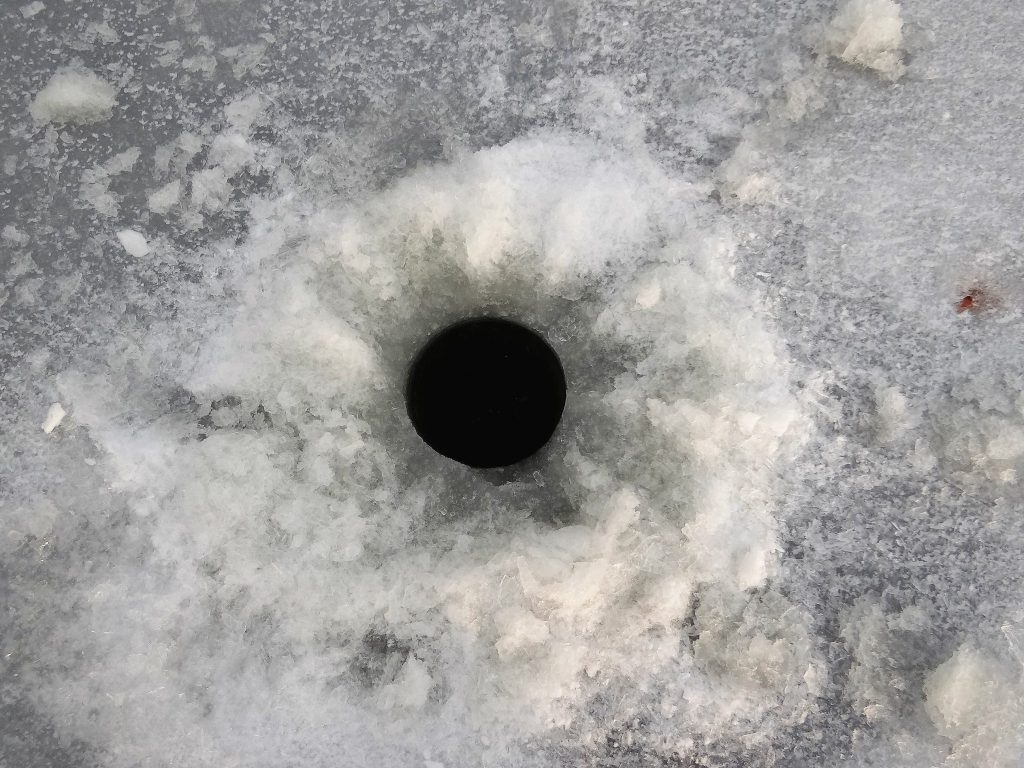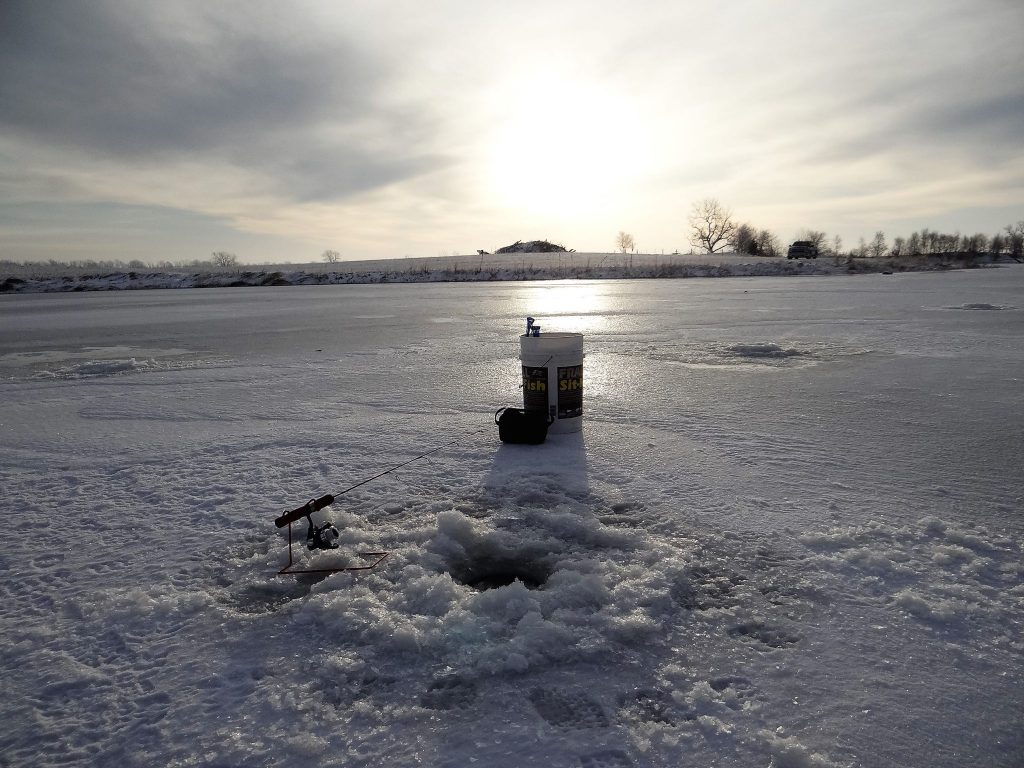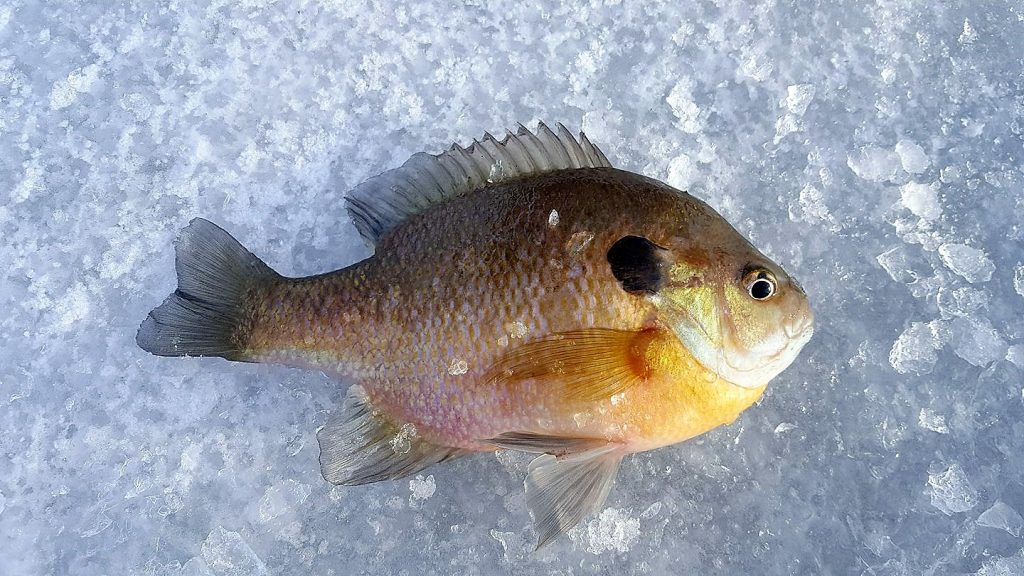In a casual conversation, whenever the topic of ice fishing is brought up, and I’m visiting with folks who don’t ice fish, predictably many questions arise.
The most common one: “Why do you even go ice fishing, it’s not very safe, is it?
Then, there are these: “It looks so cold, why on earth would any reasonable person consider going fishing sitting on a big ice cube?”

“I don’t get it, why try to catch fish through the ice in the winter?”

And, then there’s this question I had recently: “Have you lost your sanity, why would you sit on frozen lake at 4 degrees for 4 hours staring down a small hole?

But, it’s not just about the fishing.
Oh, no.
It’s much more than that.
If you love the great outdoors, the snow, the crisp, clean, fresh air — the lifestyle of ice fishing may very well surprise you with one of the best days you’ve had all winter. And, if done properly, it can be one of the best outdoor experiences ever!

Here are the top reasons for you to consider going ice fishing.
Wellness and The True Cure for Cabin Fever. Did you know that it’s been scientifically proven that just being near water can help relieve stress and contribute positively to our overall well being? While many people fish for the sake of catching fish, for many it’s about social and physiological well being. An Australian study has shown the following benefits: (1) An improvement in cardiovascular health via stress reduction, (2) A contribution to overall mental well being by eliminating outside stress and cultivating patience and mindfulness, (3) An aid to breast cancer recovery in women by stimulating chest and arm muscles, (4) A practice to help to post traumatic stress disorder through mindfulness practices, and (5) A reduction of symptoms of chronic disease and mental illness. These benefits are not exclusive to water that is not frozen. So during the winter with fewer hours of sunlight keeping us down in the dumps, what better way to keep your spirits lifted than by getting out on the water – er, ice, right?

Physical Health Benefits. Those unaware may view ice fishing as sitting on a bucket, using minimal movement to tempt fish into biting. However, that could not be further from the truth. Ice fishing can be one of the best full body exercise routines, involving a good deal of musculature for higher energy and calorie burns through aerobic and anaerobic means. First, ice anglers have to go to spots to fish that most likely requires at least 10 to 20 minutes of walking to get there. Walking in winter boots, a heavy winter jacket (and all the accessories), carrying or pulling the gear on a sled (up to 30 pounds or more), through snow-covered terrain, can burn up to twice as many calories as regular walking. It also develops cardio-respiratory fitness, and promotes muscular endurance. Vitamin D from sunshine can also be acquired. Once ice anglers reach their destinations, a series of holes using augers are drilled, as fish generally move from place to place to feed. This activity requires intense application of core muscles for short bursts (up to a minute at most). After a few hours of fishing, frequently jigging – moving your lure/bait presentation up and down off bottom of the lake, reservoir or pond, the angler has to walk the 10 to 20 minutes or more back to their destination. There may even be additional weight to carry – fish! So, a significant amount of calories can actually be burned in a single session of ice fishing, depending on how hard you are willing to work to find the fish.

Camaraderie and Quiet. Ice fishing lends itself ideally to great camaraderie or complete solitude, whichever a person desires. One can easily link up with veteran ice anglers, too, whether in family, friend or work circles, or just by visiting with those who are already on the hard water fishing. When out on the ice, people are normally friendly and are willing to tell others what they’re doing, what they’re using and how they’re catching fish. Beyond the social component, one of the most attractive facets of this winter activity or sport is about being out on the ice in the midst of winter serenity and the opportunity to enjoy nature, the peacefulness and the space to self-reflect. Still others view ice fishing as a chance to relax and simply not to think of anything substantive at all!

Made for family and friends. Ice fishing does provide a good opportunity for a person to be alone in a winter wonderland with their thoughts, but it’s a fantastic activity for the whole family or a crew of friends. Kids will be intrigued by being on the ice, touching the ice fishing baits like waxworms, repetitively jigging lures and/or bait, reeling in bluegill as well as enjoying playing and sliding around a bit on the ice. Wetting lines through the hard water can be an effective way to catch fish while also doing other things, especially if what are called tip-ups are being used. These are devices set on the ice above the hole that dangle the bait (most often minnows) beneath them. Tip-ups get their name from a flag that’s bent over and attached to a reel. When a fish takes the bait, the flags’ “tip up” action alerts the angler to the fish taking out line. Using tip-ups, cards can be played, hot chocolate can be served, kids can ice skate plus the group will surely bond over the memory of the adventure.

More Comfort, Technology and Mobility. Manufacturers and retailers in the ice fishing equipment industry are luring an increasing amount of new ice anglers to the lifestyle with products that now emphasize comfort, technology and mobility. Sure, ice augers are still popular. But, hand-cranked and gas-powered models have been replaced with propane and battery-powered versions that are quieter, cleaner, lighter and easier to operate. Gadgetry used by spring and summer anglers have entered into the realm of ice fishing. Depth finders, underwater flashers and cameras, a.k.a. digital fish finders, are available and are flying off the shelves of sporting goods stores. Some of the latest devices even send an alert to a smartphone when a fish is on the line, in case the ice angler gets distracted. There are many lightweight and highly mobile insulated portable shelters that mount on plastic sleds and collapse for transportation on the ice. These vary from small, one-person shelters (commonly referred to as “Fish Traps”) to large and complex shelters able to fit up to 6 people at once. For warmth in shelters, portable propane heaters are utilized by many ice anglers. There are several styles — with the new breed of catalytic heaters being the safest on the market, offering flame-free heat and approval for inside usage.

Accessible, Inexpensive And No Boat Required. At its core, ice fishing ranks among the more basic outdoor activities and can accommodate virtually anyone, no matter the skill level. Considering an individual doesn’t need a boat to get on the water, fishing on a densely frozen surface of ice in winter is widely accessible. Daryl Bauer of the Game and Parks Commission’s Fisheries Division calls ice fishing “the angler’s equalizer.” He says when the water freezes adequately enough, and after safety precautions are taken, anyone who can poke a hole in the ice and who is willing to spend time in the cold can fish almost anywhere they please on a given body of water. Bauer adds that ice fishing is not complicated nor expensive: “You can layer up for warmth, borrow a hand-operated ice auger and try ice angling with only a basic rod and reel combo, a lure or two, a couple dozen waxworms from a bait shop, a five-gallon bucket (for carrying gear plus to be used as a seat), something to scoop the slush out of your ice fishing hole, and, of course, a fishing permit.”

The Challenge. For those who want to catch fish through the ice, it is a difficult endeavor, and that’s what keeps the dedicated ice anglers coming back. Catching is one thing, fishing is another. Paring down the search for different species of fish from the dozens , if not hundreds of surface acres on a lake, pond or reservoir to just a few square inches where a hole is drilled and a line is dropped, is probably the most important challenge of ice fishing to ice anglers. Sometimes it is easy, other times, not so much. Contrary to what some folks think, most fish do bite in the winter. Depending on where an angler is, several active types of fish school up so the opportunities are there. Ice fishing techniques vary though with the fish species being sought, but it all comes to naught if the ice angler fails to select the proper pole, line and lure or bait, fish the right area, water and depth, detect the bite and hook the fish. Successful ice anglers have come to accept and appreciate these challenges. It has often been said by avid ice anglers that the rewards of a day on the ice make temperatures feel like summertime!

Keep It or Release It. Daryl Bauer states: “A lot of us enjoy eating fresh fish caught through the ice, they are delicious, but the emphasis on harvest is a lot less than it used to be. That is a good thing, because if the oceans can be over-fished, there isn’t a body of water in Nebraska that can’t be. Catch-and release or selective harvest (catching fish and releasing some of them) is being practiced by many ice anglers, and it’s a practice that can help maintain and improve the fishing for all of us.”

Good fishing!

The post Why Walk On Water For Fins appeared first on NEBRASKALand Magazine.















